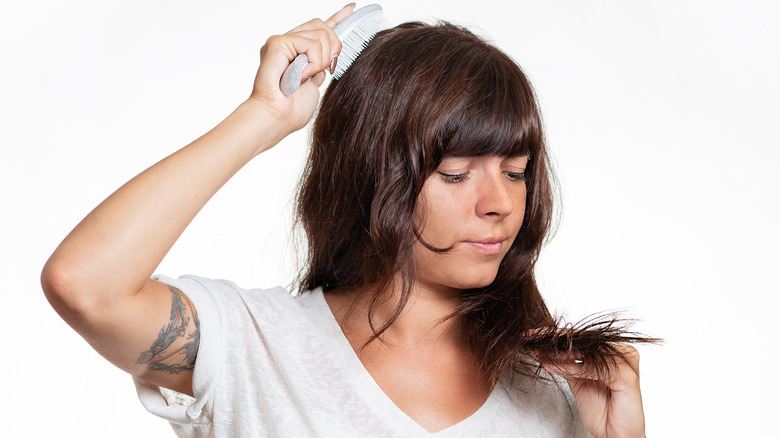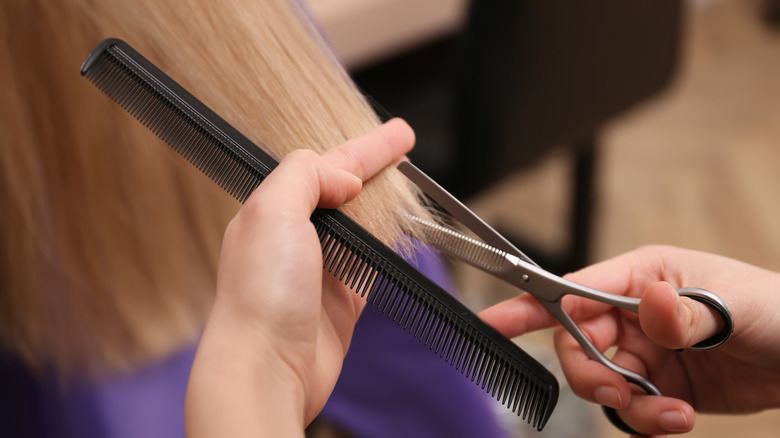Never Pick Split Ends In Your Hair. Here's Why
Foot-tapping, nail-biting, and excessive scratching are all examples of nervous habits. Nerves can manifest themselves in physical ways, and hair picking is no exception. Some people may absentmindedly chew their hair, twirl their strands, or in many cases, pick at their split ends when anxious. While this may seem like a harmless habit, what does having split ends say about the quality and health of our hair?
As reported by Shape, according to a survey conducted by Look Fantastic of 2,000 American women, the hours required for salon visits, combing, primping, and styling, adds up to a total of 6 days out of the year that women spend on tending to their hair — that's nearly a whole week!
As a result of all that wear and tear, split ends can eventually start to develop. According to Marie Claire, not all split ends are the same. "From a scientist's perspective, there [is] an infinite number of combinations of split ends," Living Proof's senior vice president of research and development Eric Spengler told Marie Claire. This can include split ends that take the shape of a two-way split, a three-way split, a knot, or even a tree-like split resembling multiple branches.
It seems like a simple solution to just peel away at all those frayed ends, but you'll want to think twice before doing so.
Don't try to get rid of split ends yourself
Once you pick at a split end, the damage is done. Inflicting this kind of damage to your hair will often lead to breakage, which will ultimately shorten hair and leave jagged edges (via Women's Health). The damage can even affect your scalp. Should the split reach the skin, hair follicles can also become damaged. When we pick at our split ends, we're actually tearing at the hair's cuticle, which weakens hair's durability and strength.
It sounds like split ends are better left alone then, right? Not quite. Hairstylist Jordan Garret spoke with Women's Health and explained that split ends still need to be done away with once detected. If left to their own devices, split ends will continue to work their way up the hair shaft. Rather than take your chances with scissors, experts advise that you visit a professional hairstylist and allow them to properly take care of it.
Additionally, Garret offers lifestyle suggestions that can be helpful in preventing the development of split ends in the first place. Our hair is most susceptible to damage when wet, so stick to brushing only once hair is fully dried. Be sure to utilize a heat protectant when using styling tools, and try incorporating high-protein foods into your diets such as chicken, eggs, and fish, to keep hair at its healthiest.


